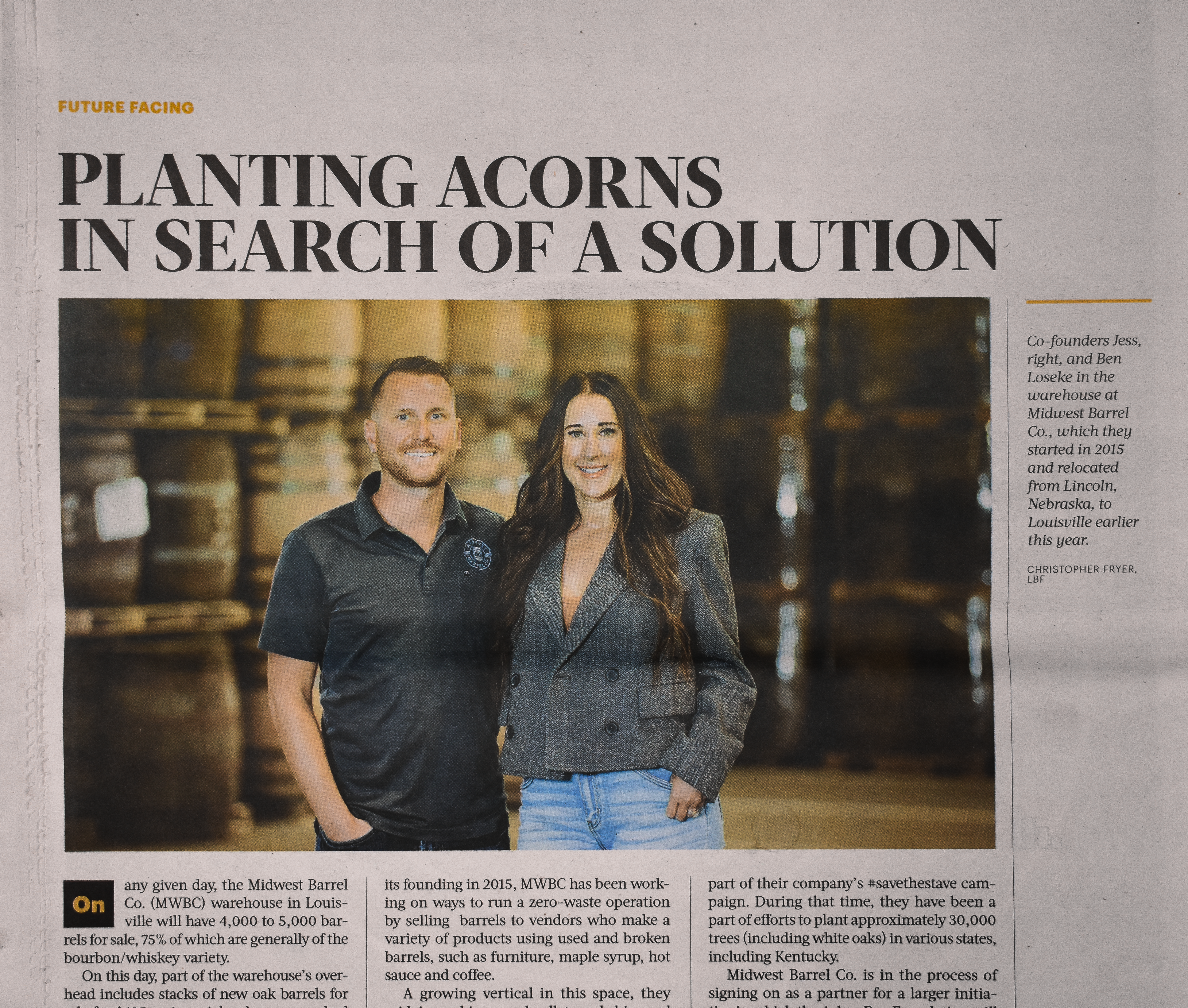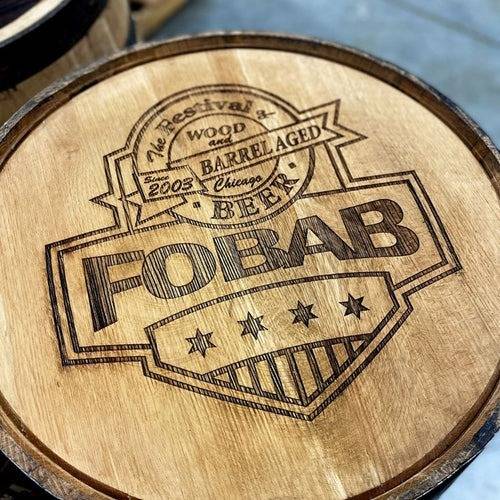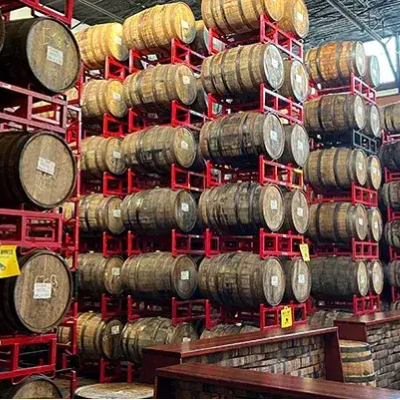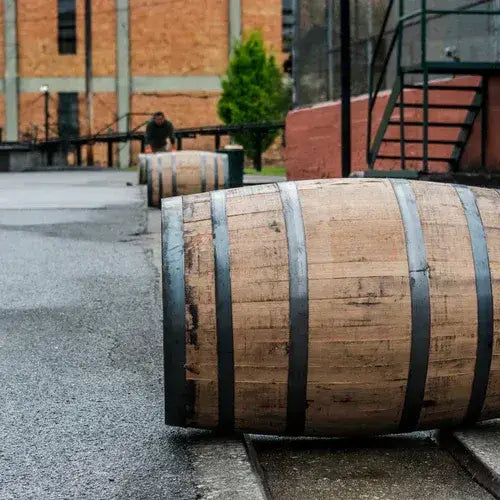Barrel-Aging 101: How to swell a dry or leaking whiskey barrel
July 20th, 2021

Barrels are good for two things – holding liquid for long periods of time and making cool stuff out of the repurposed wood. So when a barrel is leaky, that’s a major issue for most of what a barrel is supposed to do.
So if you just bought a barrel and have a leak in it, what do you do?
Most resources currently available online direct you to swell your barrel right off the bat – but this isn’t necessarily the recommended first step when you get a small format or full-size barrel. Why? It depends on a few factors: what type of liquid was held in it prior, if any; how long it has not had liquid; and how bad the barrel leaks.

LEAKS IN WHISKEY, BOURBON, AND SPECIALTY LIQUOR BARRELS
When it comes to freshly-dumped – whether that be whiskey, bourbon, or some other type of high-proof liquor – soaking the inside of your barrels with water is the very last thing you want to be doing. Barrels “breathe” the alcohol in and out of their staves as they age an alcohol, which is how the oak flavor and color is imparted on the beverage. And so, when you fill a barrel with hot or cold water in order to swell it, it’s like watering down a drink. Yes, you’ll probably still taste the original flavor for the most part – but it’s not the same as what you want to be paying for given the best option.
“But what about germs growing inside of the barrel? Shouldn’t it be rinsed out?” Not in the least.
These barrels aged cask-strength hard liquor (AKA double the bottle’s proof) in them for years, and so all that germ-killing alcohol is still soaked deep within the wooden staves. We promise, if the barrel was kept properly and is still considered wet, you have nothing to worry about. We recommend filling within one week of receiving your barrels. If unable to fill within the first week, store your barrels in a cool, humid environment up to 30 days.
That being said, depending on how long it’s been since the barrel was dumped by the distillery, there may be some minor swelling or patchwork that needs to be done, due to the fact that the alcohol has evaporated somewhat from the wood, and thus, the barrel staves or barrel head have shrunk slightly. See the “Swelling Wine Barrels” section below for more information on how to do minor swelling.
We recommend trying these options to patch a leak before swelling your barrel:
- Tighten the Barrel Rings – Use a mallet or hammer to gently tap the hoops down in order to tighten the barrel staves.
- Barrel Sealant or Wax – Rub the wax into the leaking area with your hand or drip melted wax onto the area. Varieties are available online.
- DIY Paste – A simple 1:4 ratio of distilled water and unbleached flour. Once applied, lightly go over the mixture with a blow torch to cure and seal the patch.
- Reed/Straw/Toothpicks – Gently push into the leaking spots, breaking off the piece and sanding down any excess wood sticking out of the barrel. However, if not done correctly this method can make the leak worse, so use this option with caution.


HOW TO SWELL A WINE BARREL
Wine barrels are a slightly different situation than whiskey or liquor. For one, they aren’t dumped as often so they tend to be drier than whiskey or bourbon casks, and second, their alcohol content isn’t as high, so they aren’t innately free of germs.
At Midwest Barrel, we only sell properly gassed and ozoned wine barrels. This ensures they are sure to be free of microbes, so you don’t have to worry about that part!
If it looks like your fresh-dumped wine barrel has some leaks, first try the patchwork method listed above, or head swlling method listed below; if these don’t fix all the leaks, then you may have to move on to Options 2 or 3.
OPTION 1: HEAD SWELLING
- Stand the barrel vertically on one head.
- Using hot water (+180° F), fill the top head to the top of the first ring – usually around 2” of water.
- Let the water sit overnight.
- The next morning add more water to the same head and observe any bubbles coming from the head. If no bubbles are seen, flip the barrel over and repeat the previous steps on the opposite head.
- If you see bubbles, allow the water to sit on the head for several more hours to continue swelling the wood.
- This method is great for swelling the joint between the heads and the staves, which is the most common area for leaks.
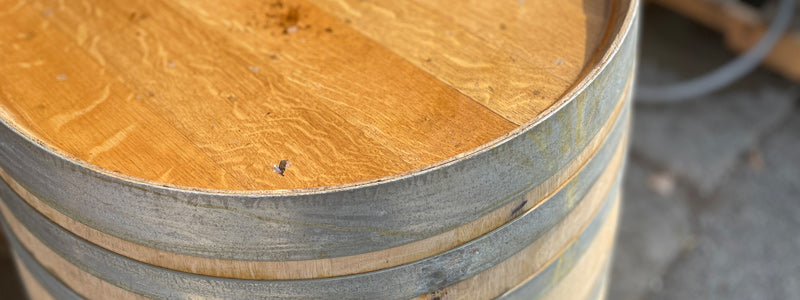
OPTION 2: SWELLING THE INSIDE
- Lay the barrel horizontally onto a common barrel rack with the bunghole facing up.
- Fill the barrel 1/3 of the way with hot water (+180° F) for two hours.
- Periodically roll the barrel back and forth to coat all of the inside surfaces of the barrel with water.
- Add another 1/3 of water to the barrel and check for leaks. If water is still leaking from the barrel, allow it to sit with water inside for another 1-2 hours. At this point the barrel should be swelled up.
- Drain the barrel completely and fill with your beverage.
- It is extremely important to fill your barrels as soon as possible with your beverage if using this method. Once introduced, the risk of contamination increases the longer the water is in the barrel.

OPTION 3: STEAM METHOD
- Lay barrel horizontally on standard barrel rack with bunghole facing up.
- Using a steam generator, fill the barrel with steam at a temperature of at least 212° F.
- Continue to pump steam into the barrel for at least 10 minutes. This may take longer if the barrel is on the drier side.
- Once the bands seem to tighten up, remove the steam and allow the barrel to cool.
- Drain any water that has accumulated.
- Fill the barrel 1/3 of the way with cold water to check for leaks. If any seeping is noticed, keep water in the barrels until it subsides. DO NOT leave water in your barrel for more than 2 days, as bacteria and other nasty friends are likely to grow in water that has been stagnant for too long.

HOW TO SWELL NEW BARRELS
New barrels have never held liquid in them, and can either come with char already on the inside or without char. Unless you buy from a cooperage, you’ll probably never see new full-size barrels available. However, small format barrels (defined as 1 liter to 30 gallons) are fairly common and are readily available at Midwest Barrel Co. We sell new small-format barrels with a medium char on the inside, so the only prep you’ll have to do is swelling.
HOW TO SWELL A
NEW SMALL-FORMAT BARREL
- Are the bands loose on your barrel? Don’t be alarmed if they are – simply slide them back into place and tap down tight with a hammer and a screwdriver. Your new barrel is dry and the bands may be loose before swelling with hot water.
- Start by rinsing your barrel three or four times to remove any loose charred wood and debris.
- Fill your barrel full of HOT water and insert the bung. Keep it full until any leaking ceases (most new barrels will leak a little before they are completely swelled). This may take as little as one hour or as long as a week or more (the larger the barrel the longer it can take).

Hope all this information helps you determine the best choice for your barrel! If you have any questions not answered in this blog, you can check out our barrel care resource page or shoot our team an email at info@midwesetbarrelco.com.
Cheers! 🍻

ABOUT THE AUTHOR:
Ben Loseke
Ph.D., and Founder of Midwest Barrel Co. Barrel expert. Plant doctor. American picker. Only known allergies: spicy food and meetings.



